Bobby Everson was nearing the end of his decade-long federal prison sentence, but he feared he wouldn't make it home alive.
In July 2021, he was sent to the Special Management Unit at the new U.S. penitentiary in Thomson, Ill. — a program meant for some of the most violent and disruptive prisoners, though many have ended up there who don't fit that description. Everson, who was serving time for drug and weapon charges, had recently been written up for "threatening bodily harm" and "assault without serious injury," though prison records don't provide details. After his transfer, his letters home to his family in New York grew more desperate with each passing week.
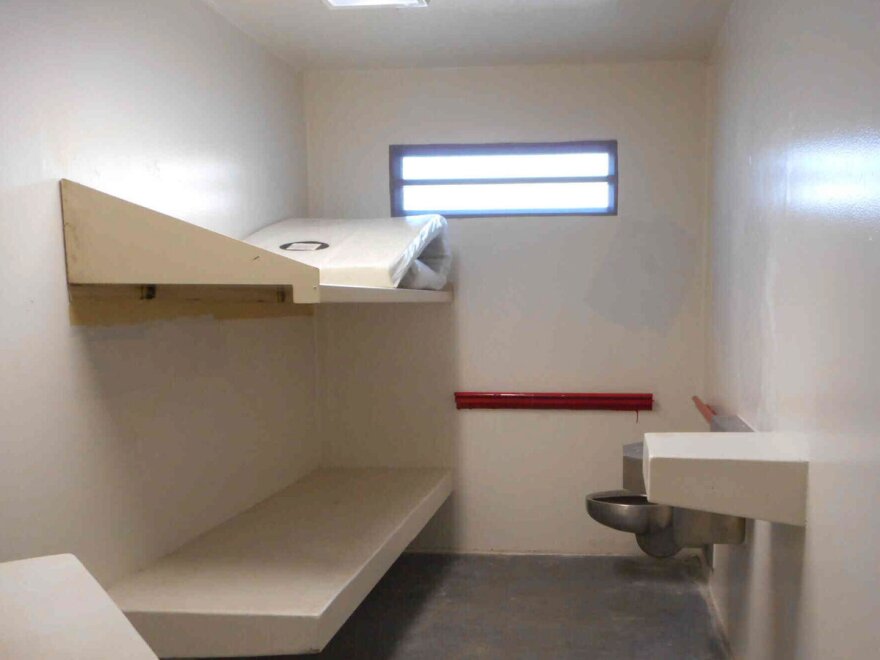
Everson, who the family called AJ, told them he was locked down nearly 24 hours a day with a cellmate, in cells so small that the toilet was crammed next to the bottom bunk. He was let out only for occasional medical appointments, showers or an hour of exercise in an outdoor cage. He could hear guards in riot gear blasting men on his tier with pepper spray and locking them in hard restraints. His own wrists, ankles and abdomen were scarred from these shackles — prisoners called it the "Thomson tattoo," according to attorneys.
But the most pressing threat came from the men officers chose to put in his cell. "I feel the staff here is purposefully trying to put me in situations of conflict," he wrote to his cousin Roosevelt Murray in late October. "Pray for your lil cousin, man, that I get through this unscathed."
In late November, Everson got in a fight with his new cellmate. "I'm doing my best to bob and weave these incidents," he wrote. "Keep calling up here, inquiring on me any lil free time you get."
Seventeen days later, Everson, 36, was found dead in his cell. It was a homicide caused by "blunt trauma" with an object, according to prison records. Federal prosecutors have yet to file charges against anyone in connection to his death, which is still under investigation.
"I was scared for him, because we don't know what happens in that prison," said Everson's father, Bobby. "When you get up in the morning and know he's not going to be here ... I just miss AJ."
Officials claimed that opening Thomson would make federal prisons safer by relieving dangerous overcrowding. But an investigation by The Marshall Project and NPR found that the newest U.S. penitentiary has quickly become one of the deadliest, with five suspected homicides and two alleged suicides since 2019.
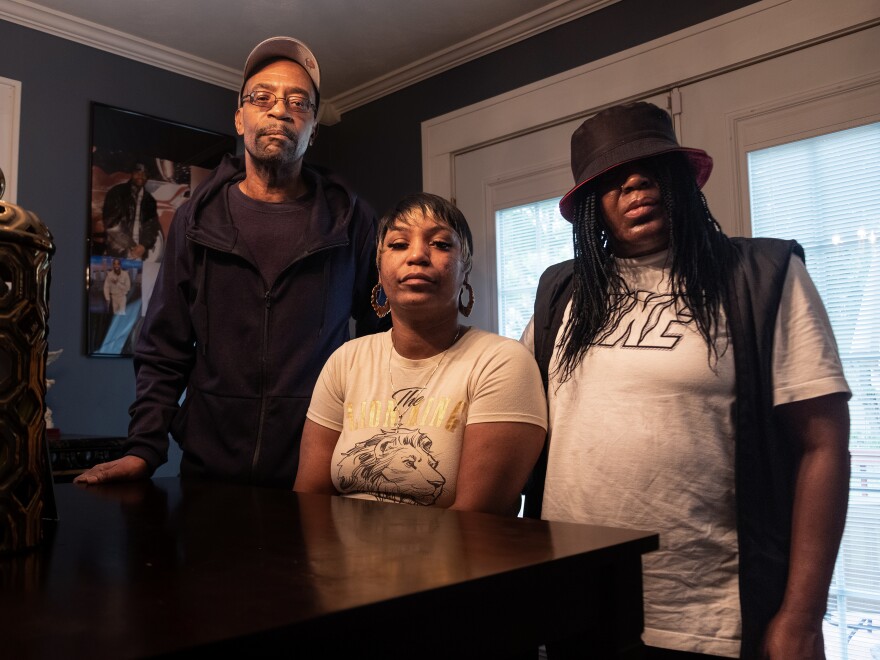
"It's beyond egregious," said Jack Donson, a corrections consultant and former Federal Bureau of Prisons official. "When you look at the policy and goals of the Special Management Unit, it blows my mind that there was [even] one homicide."
The Marshall Project and NPR obtained federal prison data and agency documents, reviewed criminal and civil court cases, and interviewed dozens of people with knowledge of Thomson. In stories that echoed with the same visceral details, dozens of men said they lived under the pressing threat of violence from cellmates as well as brutality at the hands of staff. Specifically, many men reported being shackled in cuffs so tight they left scars, or being "four-pointed" and chained by each limb to a bed for hours, far beyond what happens at other prisons and in violation of bureau policy and federal regulations.
Most people in the Special Management Unit are housed in double-celled solitary confinement — almost constant lockdown with another person. The Bureau of Prisons has said double-celling "mitigates suicide risks." But psychologists and prisoners say living in such claustrophobic conditions with another person can be even worse than being alone and often leads to violent outbursts.
Multiple people claimed in federal court filings that officers stoked tensions between cellmates and intentionally paired men who they knew would attack each other. One person formerly incarcerated at Thomson said in a lawsuit that officers spread the false information that he was a sex offender, inciting physical and sexual assault from multiple cellmates.
The Marshall Project and NPR asked the Bureau of Prisons about multiple lawsuits and claims made in federal court filings out of Thomson, but agency spokesperson Scott Taylor said in an email that he could not comment on pending litigation or individual cases. He noted that people in federal prisons are not housed in "solitary confinement," because "in general, inmates in restricted housing are housed two to a cell." To ensure safety, a team of prison officials consider gang affiliation, religion, geography and past incident reports and complaints when assigning cellmates. Intentionally ignoring a known threat from a cellmate would be misconduct by an officer and investigated, Taylor wrote.
The Bureau of Prisons' Special Management Unit used to be housed inside the U.S. penitentiary in Lewisburg, Pa. — a notorious, nearly century-old prison known as "The Big House." A 2016 Marshall Project and NPR investigation found Lewisburg had been sued multiple times over the high rate of violence among cellmates and the use of harsh restraints by staff. In 2018, the Bureau of Prisons announced it was moving the unit to Thomson.
According to lawsuits, letters and interviews, the violence and abuse at Lewisburg simply relocated to the new facility. The Washington Lawyers' Committee for Civil Rights and Urban Affairs, a legal nonprofit, has spoken to dozens of men at Thomson, many of whom said conditions there were worse than at any other federal prison — including Lewisburg.
"They're literally afraid for their lives," said Jacqueline Kutnik-Bauder, deputy legal director of the committee, which had previously sued Lewisburg over a lack of mental health care. "[But] if they refuse to be celled with a person who they think could kill them ... they get pulled out of the cell and put into restraints as a punishment."
Kutnik-Bauder has heard similar descriptions of shackling from numerous people held at Thomson. "They're having their arms and their legs stretched out and held, separated, for hours and sometimes for days on end," she said. "They are denied food. They are denied water. Many of them report being left in their own waste. It's really akin to a torture chamber."
According to Bureau of Prisons policy and federal regulations, such severe restraints should be used only as a "last alternative" for people in prison who are actively dangerous to themselves or others, and only for as long as it takes to subdue and control the person. "Force may not be used to punish an inmate," the policy states.
"Generally speaking, per BOP policy, restraints are not used as a method of punishing an inmate or in any manner which restricts blood circulation or obstructs the inmate's airways or in a manner that causes unnecessary physical pain or extreme discomfort," Taylor, the bureau spokesman, wrote in an email. "Allegations of staff misconduct are taken seriously by BOP and are referred for investigation to the Office of the Inspector General."
Federal prisons across the country are facing growing scrutiny over outbreaks of violence and abuse by officers, as documented by The Associated Press. And understaffing at many prisons escalated to crisis levels during the pandemic, increasing risks for staff and incarcerated people alike. In response, the Senate has formed a new group to investigate federal prison operations, and Bureau of Prisons Director Michael Carvajal announced his resignation in January. But there's been little national attention paid so far to the ongoing violence at Thomson.
"He didn't deserve to die"
On March 2, 2020, officers put Matthew Phillips — a 31-year-old Jewish man with a large Star of David tattooed on his chest — in a recreation cage with two known members of a white supremacist gang, according to a federal court indictment. The gang members beat and kicked him until he went unconscious. Officers yelled at the men to stop, the indictment says. This wasn't the first time Phillips had been targeted — he was previously attacked by gang members at Thomson and another prison, according to claims made in a lawsuit.
Phillips' parents flew from Texas to a hospital in Iowa, where their son was unconscious and handcuffed to his hospital bed. They had to visit one at a time, limited to 10 minutes, with a guard in the room and two guards outside.
According to information from a Bureau of Prisons internal affairs report shared with The Marshall Project and NPR, officers laughed and made jokes at Phillips' expense, prompting hospital staff to complain about their conduct.
Phillips died three days later, as he neared the end of his seven-year sentence for drug possession with intent to distribute and money laundering.

"It was a long horrible journey that ended in the worst possible way, a death with no degree of dignity at all," said Phillips' mother, Sue. When she flew home from Iowa, her son's last letter was waiting in her mailbox. "I don't think I'll ever recover from it. The Bureau of Prisons doesn't care about the damage they leave in their wake. He didn't deserve to die; he deserved to come home."
In December 2021, federal prosecutors in Illinois charged the two gang members with committing a hate crime and murder. They both pleaded not guilty and face up to a life sentence if convicted. And this February, the Phillips family filed a federal lawsuit, suing the bureau for failing to prevent Matthew's death.
Bureau spokesperson Taylor said he could not comment on the family's ongoing lawsuit. "We can say, however, that BOP is cooperating fully with the investigation and prosecution related to the incident to ensure that justice is served," he wrote.
After Phillips was killed, the violence at Thomson continued.
In November 2020, Edsel Aaron Badoni, a 37-year-old member of the Navajo Nation, died from stab wounds after a fight with another prisoner.
Boyd Weekley, a 49-year-old man from South Dakota, died less than a week later by hanging, according to prison records. (Weekley was the only person to die in Thomson's general population and not the Special Management Unit, according to prison officials.)
Roughly two weeks after that, Patrick Bacon, 36, of Washington state died by suicide, according to an autopsy.
In February 2021, 41-year-old Shay Paniry of California was stabbed to death.
Bobby Everson was killed in December 2021.
And then in March 2022, James Everett, a 35-year-old man from Kansas City, Mo., was found dead. The Bureau of Prisons confirmed in an email that his death was a suspected homicide. A death certificate and autopsy have not been released.
"I think that's what bothers me the most. You send somebody's child home, and you don't even tell them what happened to them," said Everett's father, James. When the family received the body, there were scars on his son's wrists. "It's like, 'Here he is, go bury him.' He had written letters that they were trying to kill him."
There were at least 167 recorded assaults at Thomson between January 2019 and October 2021, according to data provided by the bureau. But this is an undercount, as it doesn't include more serious incidents or deaths that were dealt with outside the prison disciplinary system.
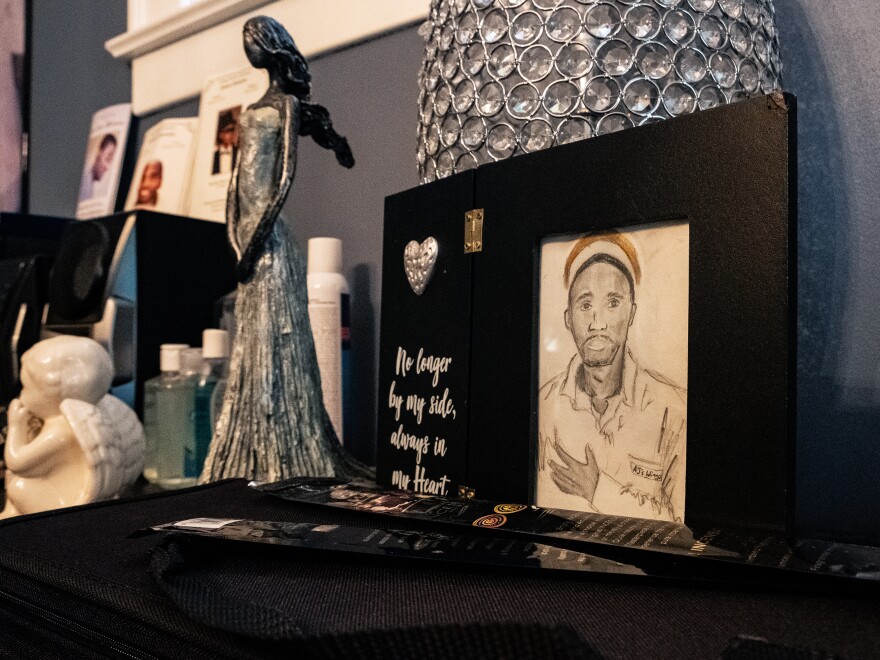
Legislators said the violence is in part due to persistent understaffing. Congress members from Illinois appealed to the Bureau of Prisons in 2021 for worker retention bonuses, writing that the deaths at Thomson "may have been prevented with additional staff."
Officials have struggled to lure enough officers to Thomson, a village of under 1,000 people, especially amid a nationwide prison staff shortage and a hiring freeze under former President Donald Trump. In May 2021, over 30% of the prison's correctional officer jobs were unfilled, according to a letter by union officials. Staff, from counselors to cooks, were regularly conscripted to work as guards. (As of May 2022, prison officials report that 78% of corrections officer positions at Thomson are filled.)
"USP Thomson is experiencing a staffing crisis, bar none in the Bureau of Prisons," said Jonathan Zumkehr, president of Local 4070 of the American Federation of Government Employees, in 2021. "The conditions witnessed at USP Thomson, without immediate intervention, have cultivated an environment with catastrophic potential."
A new location in Illinois
The Thomson facility was built in 2001 by the Illinois Department of Corrections. But it sat vacant for years until the federal government bought the complex, at the urging of Illinois Congress members. Lawmakers said it would create more than a thousand jobs and bring in millions of dollars for local businesses.
"Communities across our region of Illinois have spent over a decade thirsting for today's great news," Rep. Cheri Bustos, a Democrat from Illinois, said in 2014 of moves to open the prison. Illinois Democratic Sen. Dick Durbin called it "a significant investment in the economic future of northern Illinois."
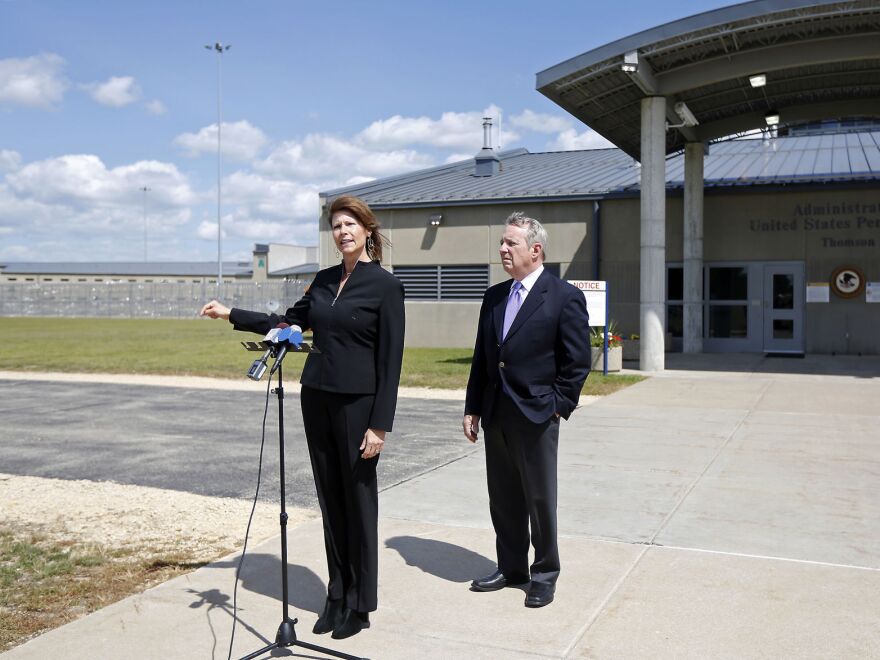
At the same time, Durbin was positioning himself as a critic of solitary confinement. "I have told the Bureau of Prisons to make sure that we're learning lessons about humane treatment that is not going to endanger the inmate's life," he said of the new facility in a 2015 interview with The Marshall Project and NPR. Of double-celled segregation, "I hope we don't see that at Thomson," he said. "I believe it's dangerous."
President Barack Obama initially considered housing Guantánamo detainees at the building in Thomson. But in June 2018, Bureau of Prisons officials announced they were moving the Special Management Unit from Lewisburg to Thomson. The move was to increase capacity, according to Taylor, the bureau spokesperson.
Meanwhile, the bureau was fighting a decade-long legal battle against one man incarcerated at Lewisburg. In 2011, Sebastian Richardson sued the prison, claiming he had been left in painful restraints for nearly a month, in retaliation for refusing to cell with a man who had assaulted multiple cellmates. The chains were so restrictive he was forced to sleep on the floor, Richardson said in a deposition, shoving toilet paper into his ears and nostrils to keep out bugs. Richardson's attorneys tried to file a class-action lawsuit, citing the widespread practice of chaining up prisoners.
An April 2018 report by an agency that oversees prison conditions confirmed that multiple men in the Special Management Unit at Lewisburg were being chained and shackled, sometimes for days. Two men set themselves on fire in protest of the brutal conditions and were then forced into restraints, multiple prisoners told auditors. (In an email, Taylor said the men had set their belongings, not themselves, on fire "in an attempt to have staff open their cell door while they were unrestrained" and assault officers. "It was determined the staff response was appropriate," he wrote.)
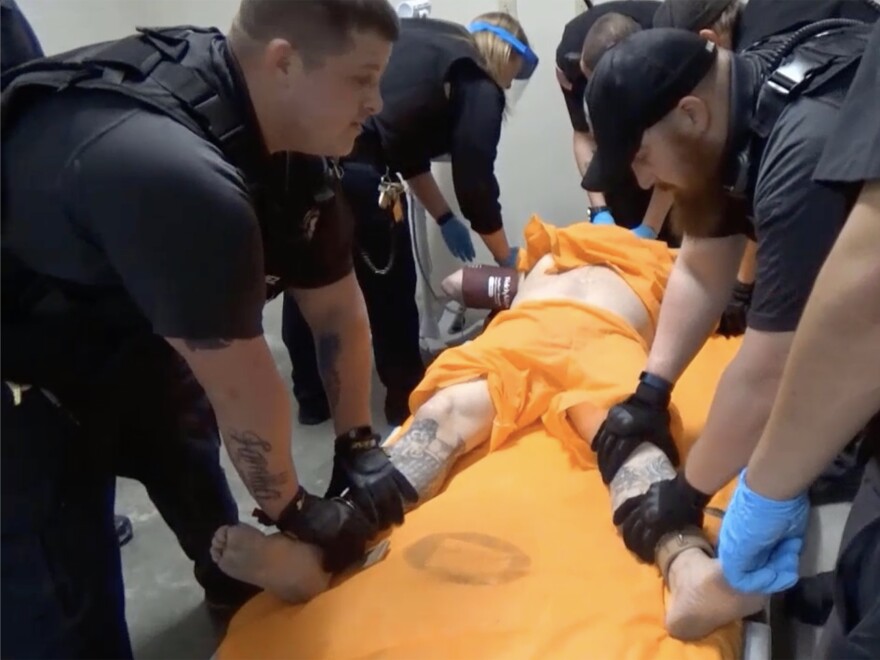
But when officials announced the unit was moving to Illinois, the court ruled that the class-action claims were moot, as the Special Management Unit was no longer in Pennsylvania. The Bureau of Prisons settled the individual lawsuit with Richardson this February for an undisclosed amount. More than a decade after leaving Lewisburg, Richardson said in a recent interview that he still suffers searing pain, swelling and numbness in his hands.
Some advocates for men at Lewisburg hoped a new facility would mean better conditions. But not long after the Special Management Unit opened at Thomson, incarcerated people started writing letters making familiar claims of abuse, and local news reported as more men were killed.
In an emailed statement this week, Sen. Durbin, who is chair of the Senate Judiciary Committee and part of a Senate group working to strengthen prison oversight, called the deaths at Thomson "unacceptable" and said he was pushing for a "reform-minded" leader to head the Bureau of Prisons. Durbin called for agency director Carvajal's resignation in November.
"For many years, I have sounded the alarm on BOP's widespread failings," he wrote. "It's disappointing that the BOP has yet to fully address its staffing crisis and take the steps necessary to improve conditions of confinement and end the overuse of restricted housing throughout all of its facilities, including Thomson."
Heather Sager, a spokesperson for Rep. Bustos, said in an email that Bustos would keep pushing to ensure that Thomson had the "resources and staffing necessary to help keep staff and those incarcerated safe."
Some at Thomson call it "the dungeon"
At Thomson, some call it "the dungeon" or "the torture room." It's where men say they are locked in hand and ankle cuffs so tight they leave scars and nerve damage, according to filings made in federal court. Others claimed in lawsuits that they were four-pointed, spread-eagle and immobile, for hours at a time. Several have claimed in legal filings that they were put in paper clothes, denied food and water, and forced to lie in their own urine and feces.
Multiple men incarcerated at Thomson said officers would fabricate reasons to justify restraining them, writing on internal forms that they were making threats or slipped their hands out of cuffs and hit a guard.
"To be chained down inside of an ice cold cell where the restraints are cutting into your flesh, forced to defecate and urinate on yourself ... is torture," one man incarcerated at Thomson wrote in a letter to reporters.
Bureau spokesperson Taylor said any allegations of abuse of force were taken seriously and investigated.
The bureau did not provide data on the use of restraints at Thomson. But it did provide data on how many times officers there deployed emergency pepper spray: at least 231 times between January 2019 and August 2020 (the most recent data provided) — 72 more incidents than the second-highest-use facility.
One man who sued the prison as "John Doe" claimed that officers mislabeled him a sex offender and told the other prisoners to "clean up their car," meaning get rid of the sex offenders and snitches in their unit. According to his lawsuit, when Doe tried to avoid returning to his cell out of fear, he was pepper-sprayed and shackled by guards. Officers then chained him down to a concrete bed, beat his body and genitals with shields and left him there through the night, according to his court filing.
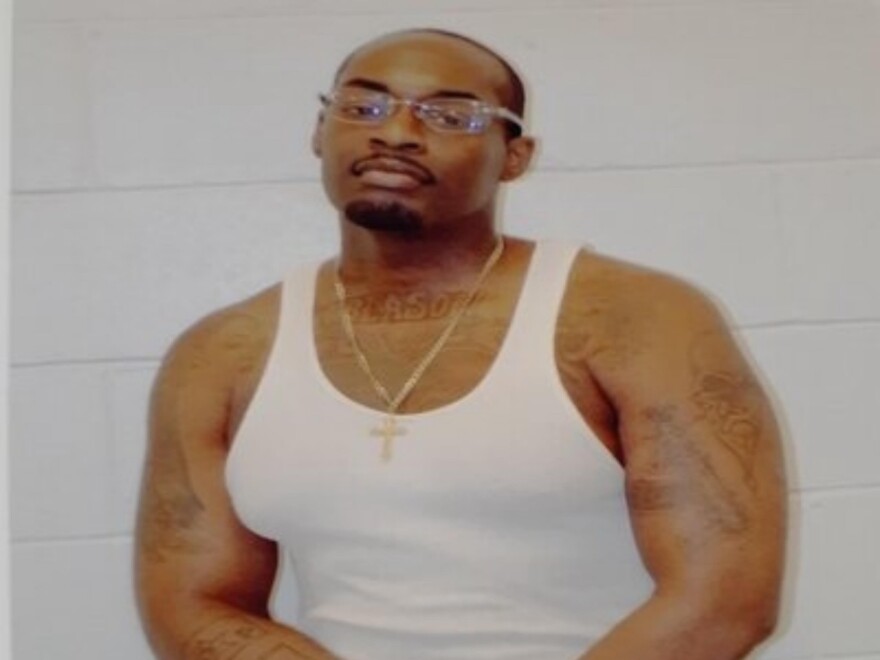
"This sort of extended physical and psychological torture caused the Plaintiff physical pain and suffering, and extreme, permanent mental anguish," the complaint states.
After he was returned to his cell, Doe was repeatedly attacked by his cellmate. Desperate for help, he slipped a note about his blood pressure to a nurse, sneaking in tiny print, "please help me, I'm being sexually assaulted." Even after that person was moved, Doe was beaten by his next two cellmates, according to his legal complaint.
"I've seen a lot of things, and I had never heard of something like this," said Richard Dvorak, a civil rights attorney in the Chicago area who has taken on Doe's case, along with another lawsuit out of Thomson. Doe has since been moved to another prison.
The Bureau of Prisons has until July to respond to the lawsuit in court.
A spokesperson for the Justice Department said in a separate statement that the department was "equally committed to ensuring that the Bureau of Prisons can meet its dual mission of 1) providing safe, secure, humane conditions for individuals in their custody and 2) doing everything they can to properly prepare individuals for a return to society."
"He was a victim of staff and prisoners alike"
In December 2021, a Thomson prisoner named Demetrius Hill wrote a letter to the federal judge in Illinois, filed as part of his own lawsuit, about the man in a nearby cell. He had been writing regularly to the court to bring attention to what was happening at the penitentiary. "Between 10:00 and 10:47 pm the prisoner in cell F3-13 was brought out of his cell and placed on a stretcher, having blood all over his face and completely unconscious," he wrote.
The man on the stretcher was Bobby Everson. Hill wrote in a letter to reporters that Everson, who was about 5 feet, 6 inches tall, had been housed with a much bigger man who had assaulted multiple previous cellmates.

"He was murdered in the SMU, forced into the cell with a raving lunatic who told the CO unit team over and over again that he'd kill him," Hill wrote in another federal court filing. "He was a victim of staff and prisoners alike, the same prisoner who was put in chains, repeatedly slapped in the face, picked up and slammed, and had gas sprayed in his face."
The man who Hill claims killed Everson has not been charged in Everson's death. But that man had been writing his own federal legal complaints and motions, claiming he had been beaten by guards while in hard restraints, assaulted by past cellmates, denied his medication, and previously housed with men who officers knew were dangerous.
"I am tired of fighting people," Everson's cellmate wrote, a month before Everson's death.
Bureau spokesperson Taylor said he couldn't discuss Everson's death because it was still under investigation. He reiterated that allegations of employee misconduct are referred to the Office of the Inspector General. If someone in prison has a "security concern," he wrote, they can tell the officers on their unit or file an administrative remedy and ask to be moved.
Five months after Bobby's death, the Everson family had not received his death certificate or an autopsy report. They did receive a phone call and a pamphlet from the FBI, which said the agency was investigating Everson's death. (Federal prosecutors have not filed charges, and an FBI official told reporters they could not discuss the case.) The family was mailed a box of his belongings, including handwritten rap lyrics, a Bible, deodorant and two self-help books. And they received his body — bruised and scarred — though they weren't given enough financial support to bury him as they wanted. They had to cremate him instead.
Now there are memorials to Everson scattered throughout his sister Ebony's house: a sketch of Bobby drawn by his cousin, a poster-size photo collage with pictures of him at a Rick Ross concert, the program for his funeral lined up on the windowsill. Before he died, Everson wrote about how he was excited to move home to New York, reconnect with family, pursue his rap career and get a job as a truck driver.
The family has been through this before. One of Everson's cousins died in a New York state prison in 2005, when he was 20 years old. His death was ruled a suicide, but his mother, Angela Everson, doesn't believe it.
"I think you grieve longer and harder because you don't know [what happened], but you can imagine," Angela Everson said. "My boys were not the only ones killed by the prison, and they won't be the last. It's a pain that just don't go away."
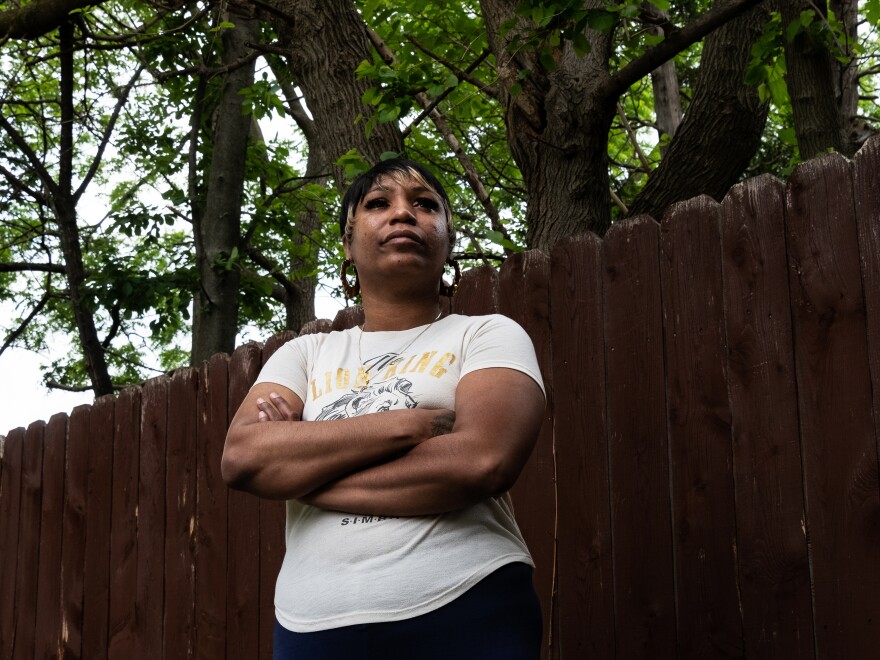
Editor's Note: The letters from prison written by Demetrius Hill, Tony Knott and Carlton Landis were read in the radio story by Robert Davis, a reentry advocate; Andre Gray, a senior peer navigator; and Reginald Williams. All are with the DC Jail and Prison Advocacy Project at University Legal Services.
Copyright 2024 NPR









